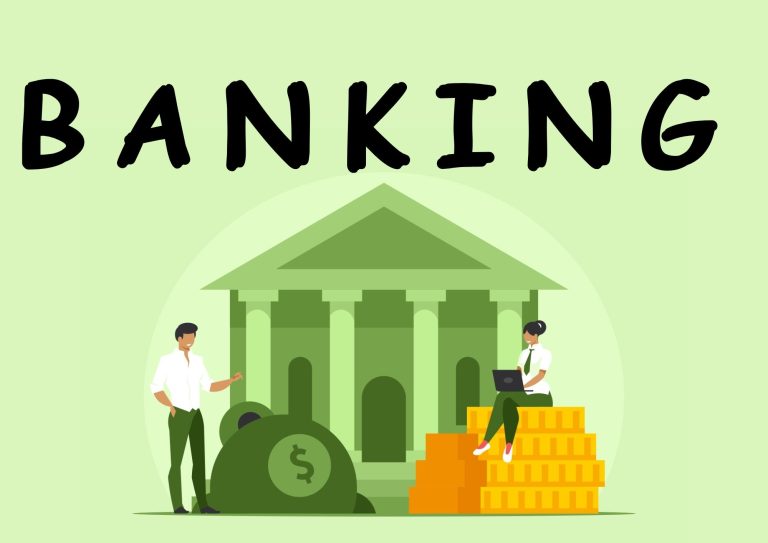Banking is the branch of finance that provides various financial services linked to the movement of money like credit facilities, cash storage, investment, and other financial transactions. Banks are the major players in this industry.
A bank is a financial institution licensed to accept deposits, make withdrawals, and give loans. Besides this, they offer different services such as mortgages, retirement accounts, currency exchange, forex trading, and wealth management.
Generally, in most countries, banks are regulated by the national government or the central bank.
What is the purpose of banking?
The primary role of banks is to take in funds called deposits from those with money, pool them, and lend them to those who need funds. A bank is a medium between those, who lend money to the bank (depositors) and who borrow it from the bank (borrowers).
A brief history of banking
The first recorded information about banking operations dates back to ancient Mesopotamia, where merchants had supplied the farmers and the traders with grain loan. From the 100 BCE to perhaps 500 CE, the banks in Rome were actively involved in currency exchange and acceptance of deposits. They also had money-lending individuals called money changers. These were the individuals who established banking centers in ancient Roman cities and carried on banking from 500 CE to about 1400 CE.
When the Western Roman Empire collapsed, banking dwindled in this part of Europe, but it did not stop in the Byzantine Empire and the Islamic territories. The Knights Templar, a Christian military order, established an early form of international banking, allowing pilgrims to deposit and withdraw funds across their network of commentaries.

Modern banking
Modern banking originated at the period between 1400 CE to the 1700 CE. This was the period when the Medici family — the Florence-based powerful bankers family in Renaissance Italy — devised the double-entry bookkeeping system. This era was highlighted by the creation of the first central banks including the Bank of Amsterdam in 1609, the Swedish Reichsbank in 1668 and the Bank of England in 1694.
Industrial revolution, from 1700 CE to about 1900 CE, led to higher economic growth and increasing demand for financial services. Central banks began to issue banknotes and manage the money supply.
During the last years of the 19th and early 20th centuries the gold standard became the major world monetary system. It was difficult, with this system, for governments to increase liquidity and stimulate economic growth during recessions or depressions. It was this rigidity which finally caused the collapse of economics that led to the Great Depression in the 1930s.
The gold standard collapsed during the Great Depression. This prompted the establishment of regulatory bodies as well as insurance schemes aimed at safeguarding the interests of depositors. From then, the volume of multinational banks, the automatization of banking services, and the introduction of credit cards and electronic payment systems has risen. Then after, the emergence of the internet, online banking and cryptocurrencies like Bitcoin started to flourish.

How banks work – Fractional-reserve banking
At present, banks can create credit and continually stimulate economic growth through the facilitation of lending and investment under the fractional reserve banking system. Fractional-reserve banking is a financial system that demands that banks keep only a fraction of the customer’s deposits as a reserve. The rest of the money is lent out or invested in any way they might choose. The bank generates its income through interest and fees.
Advantages of fractional reserve banking
1. Profitability
It allows banks to make profits from interest earned on loans. They also profit from relevant fees applied to investments they make using client`s deposits. These earnings, in turn, allow banks to stay profitable. They also boost shareholder value, as well as lure more investment into the financial industry.
2. Credit creation
It gives banks the ability to create and extend credit to its clients. This credit is created by lending out the part of their customer deposits. This credit is the source of the liquidity that businesses and individuals need to develop and innovate.
3. Economic growth
It helps banks increase the money supply, fueling investment and consumption. This stimulates economic growth, encouraging the creation of new jobs and industries.
Disadvantages of fractional reserve banking
1. Inflation
In a fractional reserve banking, loans are originated out of thin air which leads to an expansion in the money supply. When money supply develops faster than the economic growth it can lead to inflation. Inflation reduces the purchasing power of money and could cause economic imbalances.
2. Excessive risk-taking
Banks may be lured to create an environment of excessive risk-taking. They do this so that they maximize their profits through high risk loans and investments. In such a situation, money will be circulated on misplaced items and create asset bubbles instead of proper allocation of resources. Banks with high levels of risky loans and investments may face insolvency in the event of a financial crisis necessitating government intervention or bailouts.
3. Bank runs
Fractional reserve banking can make banks vulnerable to bank runs. A bank run is a financial situation where a large number of customers decided at once to withdraw their deposits. They do this because they are worried of the financial situation of a bank. Banks may not have enough cash on hand to meet withdrawal demands. This is because they only hold a fraction of their deposits in reserve. That can cause a crisis of confidence which may lead to financial instability.
Conclusion
Banking is a fundamental industry. It eases financial transactions, undertakes credit facilities, and moves money in the economy. Banks accept deposits, provide loans, and offer a wide range of financial services like mortgages and currency exchange. The banking sector has experienced a significant evolution right from the ancient Mesopotamia to the current digital era. The most important developments of the banking sector have included fractional reserve banking and the emergence of multinational banks. Fractional reserve banking has advantages like profitability and economic growth stimulation. However it also comes at the cost of possible liabilities such as bank runs, inflation, and excessive risk taking. It is important that you have an understanding of banking. This will make you knowledgeable to make the right decisions about your finances and participate successfully in the world economy.


